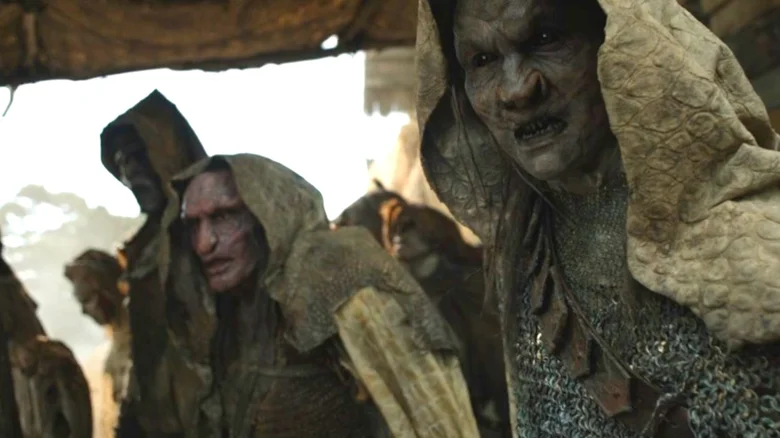This post contains spoilers for “The Lord of the Rings: The Rings of Power” season 2, episode 3.
Early in episode 3 of “The Rings of Power” season 2, Adar has a conversation with one of his orcs regarding their impending invasion of Eregion. As they stop talking, Adar goes on to meet the hill-troll Damrod, but the camera lingers on the orc, who hears a tiny gurgling cry behind him. He turns to another maternal-looking orc, who stands nearby cradling a tiny figure in its arms — presumably an orc baby.
Wait a second, though — do orcs have babies? Do they even have multiple genders? Don’t they emerge from the muck and slime, like we saw in Peter Jackson’s film adaptation of “The Fellowship of the Ring”?

The question about how orcs reproduce and where they originate always make me hesitate — not because there isn’t an answer, but because there are too many of them. This is an area that author J.R.R. Tolkien semi-addressed in different ways on more than one occasion.
For those of you looking for a quick answer, suffice it to say that, yes, some theories of orcish culture and reproduction make room for family units, and while I’m not aware of any passages where Tolkien goes into much detail about orc children and infants, they presumably could exist in Middle-earth. Seeing them on the screen, though, opens up an entire can of worms about what kind of orc origin the show is using and how it could impact the role of the orcs in the larger “Rings of Power” narrative. Let’s take a closer look, shall we?
Where do orcs come from?
Let’s start with a quick primer on orcish origins. “The Silmarillion” has one of the more definitive explanations of what the orcs are. The book explains that Elves believe some of the earliest of their kind were captured by the original Dark Lord, Morgoth, with the text adding, “and by slow arts of cruelty were corrupted and enslaved; and thus did Melkor breed the hideous race of the orcs in envy and mockery of the Elves, of whom they were afterwards the bitterest foes.”
Adar himself, who is an interesting artistic take on this phenomenon, hints at this in episode 1 of season 2, when he says that he and a few select others were starved and tortured on a mountaintop before drinking the Sauron Kool-Aid and turning to the dark side. But this Elf-turned-orc narrative isn’t the only explanation.
Over the course of his writing, Tolkien also explored the idea of orcs being tortured Humans and even soulless animals or simply beings bred from stone. Those last two are harder to believe, though, since the Oxford professor and confessing Catholic genuinely grappled with the concept that orcs could be redeemed and weren’t puppets or irredeemably under the domination of their masters.
Orc families in Lord of the Rings lore
Okay, so orcish origins are a bit of a mixed bag. But in “The Rings of Power” story, specifically, it does appear that the show has embraced the orc-from-Elf approach, with Adar as proof. If that’s the case, it could be assumed that orcs would reproduce like an ordinary humanoid, sentient being.
Again, Tolkien doesn’t belabor this point, but he does make one reference to orcish reproductive activity in “The Two Towers” that is worth bringing up. In that book, Treebeard puzzles over the new race of Uruk-hai that Saruman has invented, saying, “I wonder what he has done? Are they Men he has ruined, or has he blended the races of orcs and Men?” The implication here is that Saruman could have orcs and Humans buddy up and have babies, creating a new race. Working off of this, we can safely presume that orcs can mate with one another, too, creating orc children in the process.
The last thing I’ll say here is that in “The Lord of the Rings” and most Middle-earth stories, we see the tough soldiers that make up the outward-facing edge of orcish culture, so to speak. To expect to see babies in their midst (let alone women and children in this medieval-themed culture) would be unusual. It would be like wandering onto a battlefield between French and English knights in the Middle Ages and seeing families with kiddos running around in the carnage.
The idea of orcs having babies is an organic one. The fact that we haven’t seen them before (up until this point) in the horrors of war, where we typically run into orcs in Middle-earth, is just as natural. But using the opportunity of a peaceful orc camp to hint at what life must look like behind the front lines was a fun move by the showrunners, and one I would expect to see more of before the show ends — that is, assuming the orcs get a moment’s peace again before the Second Age ends.





